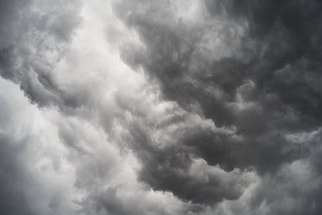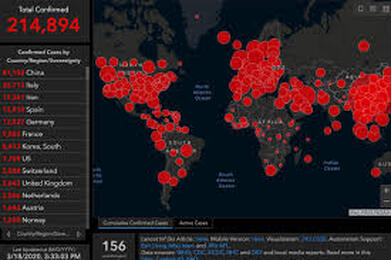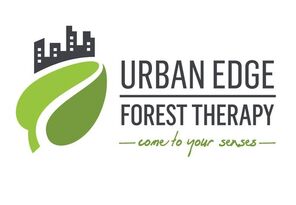 We sat at the edge of brokenness, with a view of what wasn't right with the world: the tempo accelerating, how we worship speed - faster, faster, instantaneous communication, purchasing, travel (to Paris in just a few hours!); the constant thirst for information, driven by its constant production, from 24/7 news, to daytime talk shows, late night talk shows, Tweets, and Facebook feeds, the newest, the latest, the greatest, the Fear of Missing Out; how we pillaged and mined the earth for its resources, gluttonously feeding our ever-growing appetites, and to our own peril careless about the needs of other creatures and the planet's finely tuned equilibrium. And then it happened, a pandemic of Biblical proportions as if out of an Old Testament story, something about a king, greedy, shrouded in gold, and dismissive of the needs of his people. Like the voice of a divinity, it announces to the people, who had lost their way, "There is something bigger than you!" A force, like the plagues of ancient Egypt, crossing boundaries of state and country and political divides, necessitating that we slow down and take stock. It awakens us from the whirling giddy miasma of modernity, and shakes us into remembering the timeless things that matter most -- our loved ones and communities, to breathe, and the beauty of nature and the world around us. At the same time that we grieve for the loss of lives and economic hardship brought on by the pandemic, perhaps too there is a way this moment offers medicine for our times, medicine that supports the sentiments of Earth Day on its 50th anniversary. --- Things Fall Apart By William Butler Yeats Turning and turning in the widening gyre The falcon cannot hear the falconer; Things fall apart; the centre cannot hold; Mere anarchy is loosed upon the world, The blood-dimmed tide is loosed, and everywhere The ceremony of innocence is drowned; The best lack all conviction, while the worst Are full of passionate intensity. Surely some revelation is at hand; Surely the Second Coming is at hand. The Second Coming! Hardly are those words out When a vast image out of Spiritus Mundi Troubles my sight: somewhere in sands of the desert A shape with lion body and the head of a man, A gaze blank and pitiless as the sun, Is moving its slow thighs, while all about it Reel shadows of the indignant desert birds. The darkness drops again; but now I know That twenty centuries of stony sleep Were vexed to nightmare by a rocking cradle, And what rough beast, its hour come round at last, Slouches towards Bethlehem to be born?
0 Comments
On the eve of the Jewish holiday Yom HaShoah--Holocaust Remembrance Day--we commemorate the millions of people murdered by the actions of Nazis and their collaborators. Many of us are familiar with stories about families hiding out during that time. Some survived. Many perished.
As we find ourselves in a time of hunkering down, avoiding gatherings, isolating in close quarters with a limited number of people, I have been thinking about the far more extreme experience of those hiding from Nazis during World War II. This is with full awareness that the comparisons here are not to be overstated--on the one hand a deadly political force intent on the annihilation of a people; on the other hand a virus, its impact influenced by political and socioeconomic factors, but the virus itself devoid of willful intent to harm. I delve into thoughts about how people in hiding during that horrific time endured the hardships of sequestering for months on end in basements, in attics, hidden away behind concealed doors, with no ability to go outside, eating only what meager food was provided and being thankful for that. What a luxury it is, even amid this challenging time of COVID-19 pandemic, that we can walk freely within our homes, can select our food and cook, that we can reach out to friends and family by phone, Zoom, texting, and email, and , if we're lucky, can maintain our schooling and employment. And, I am reminded of the words of Anne Frank and her recognition of the power of nature to bring solace: “The best remedy for those who are afraid, lonely or unhappy is to go outside, somewhere where they can be quite alone with the heavens, nature and God. Because only then does one feel that all is as it should be and that God wishes to see people happy, amidst the simple beauty of nature. As longs as this exists, and it certainly always will, I know that then there will always be comfort for every sorrow, whatever the circumstances may be. And I firmly believe that nature brings solace in all troubles.” How fortunate we are that we can still go outside, can admire the changes in nature that come with the arrival of spring and can look upon nature as a constant.  The COVID-19 crisis highlights many things about our ways of being: our woeful lack of preparedness for a pandemic; the broader need for health care; the power of a force of nature so much greater than ourselves and our political structures and leanings; and the impact of job, housing and wage disparities among populations, among them. It also, and perhaps most strikingly, underscores our interconnectedness. Indeed, central to the coronavirus' spread are the complex webs of links among beings. The virus jumped species, moving from non-human creatures to people, and once rooted within people, each point of human contact becomes its own node of countless connections, and on and on. It's our nature to be social creatures. We engage with family, friends, work colleagues, and fellow travelers on boats, airplanes, buses, and trains. We engage with fellow shoppers, theater-goers, congregations, book club and sports and exercise pals. We hug, we embrace, we walk hand-in-hand. With the virus persisting on surfaces and in droplets of moisture in the air, our awareness of even traces of human connection become amplified. If I touch a door knob that was touched by someone with the virus who coughed into their hand, and I then rub my eyes, what then? If I handle groceries touched by someone with the illness and then scratch my nose, will I become infected and infect my family? If I walk along a path where an infected person recently sneezed and I inhale that same air, will I succumb to the virus? We become attuned to the invisible strands of countless connections as if we are wearing special lenses or possess a superhero-like powers akin to a UV light that discerns not just actual human encounters but residues of encounters, including those that are intermediated by the surfaces we touch and the air we breathe. So much of what it means to be human--so much of how we define ourselves--is in relation to others and the roles we play as members of multiple communities. Part of what makes combating the virus' spread is the need to isolate. This runs against our nature, how we identify ourselves, and our deep need to connect with others. Most glaring in the midst of this crisis are the daily tragedies: countless heart-wrenching experiences of illness and death, loss of jobs, disrupted schooling, and unprotected health care workers. Another, albeit minor, awareness is how interconnected -- and interdependent -- we all are. We are witnessing how a virus originating in central China has, by virtue of the extent to which humans travel and connect with one another, reached people all over the world. Yet, what is alarming in the context of a virus that causes illness and death and other hardship, is also an indicator of our human interconnectedness. May we one day be able to appreciate that interconnectedness in a context separate from the horrors of a pandemic. |
About this Blog
Hi! I'm Nancy Kopans, founder of Urban Edge Forest Therapy. Join me on an adventure to discover creative ways to connect with nature in your daily life, ways that are inspired by urban surroundings that can reveal unexpected beauty, with the potential to ignite a sense of wonder. Archives
April 2023
Categories
All
|

 RSS Feed
RSS Feed